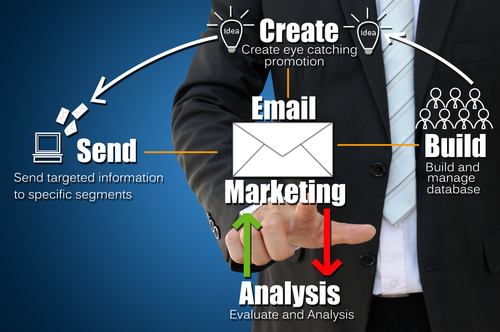Marketing emails are a reliable resource to increase company sales, expand target audiences and attract traffic to online stores, blogs and social media. Data-driven tactics are the key to getting the most from email marketing. In other words, follow the metrics. Measuring the outcomes of past campaigns, especially the poor ones, can provide insight on what needs to be changed and what successful elements need to be retained. Plan future campaigns around that core research and heed the additional tips below to achieve the most conversions and revenue.
OPTIMIZING THROUGH MEASUREMENT
You can’t boost results from marketing campaigns until you see where problems lie. Follow these tips for proper measurement.
- Tag Everything. Software exists to analyze results without tagging, but tagging allows for more specific data. Tag the email itself, as well as website pages linked in the email. Also, use hash tags for social media postings to measure what topics interest consumers and are shared the most.
- Choose what to track. There are so many variables to measure, don’t get inundated by measuring everything. Choose five or so factors to trace.
- Reception to email: Did your audience even like your email? Were they tempted to read it? Companies can measure how many emails were actually delivered or bounced back, how many subscribers were retained or requested to be deleted after getting an email, how many recipients responded to the call to action by clicking links. Track what devices were used to open the mail. If people don’t even open the email, companies can increase results by improving subject lines, refining lists or segmenting lists so that they can entice with more customized campaigns. If emails are being opened on a particular device, such as smartphones, strive to increase results by better adapting campaigns to the needs of that device.
- Campaign Results: Businesses can choose to zero in on website results, seeing who visits certain product pages, who saved items to a wish list or shopping cart or who actually completed transactions (i.e. purchases, account registration, etc). Cloud based transactional emails are a great way to track this. Also, businesses can measure social media results, finding how many additional follows or shares resulted from the email marketing campaign. Too boost future campaign results on the website, consider refining the email’s calls to actions, product images and descriptions on landing pages, or links to related products. It may also help to make checkout more convenient. If social media results are lagging, consider giving posts more personality and responding more to the comments and questions of readers.
- Customer Data: While purchases are one way to measure an email’s performance, businesses can also measure customer retention and customer acquisition
- The right tools. Small business owners should take advantage of the numerous free and paid resources that measure the return-on-investment by tracking customer behavior and preparing extensive analytical reports. Different types of tools include:
- Email Software: While small companies can save money by using their regular mail service to send out newsletters and marketing email, it’s much more valuable to use email programs specifically designed for marketing. They come with a few design options as well as special tracking tools and dashboards that display up-to-date data automatically. This is the most important resource to have.
- Analytics Software: These programs can measure the activity of visitors that find your website through your email campaigns.
- Campaign Monitoring Software: These extensive programs do everything email and analytics software can do – and much more. Campaign monitoring software has more design options, audience segmentation and expansion options, plus social media management features.
- Social Media Tracking: Apps and websites exist to measure activity linked to keywords, company names and hash tags.
- Raw Data Input Sheets: Small businesses can create raw data spreadsheets in-house to collect all findings from different measurement programs.
TIPS FOR POST-ANALYSIS MARKETING
- Once you make improvements based on past data, run an A/B testing campaign. Send out at least two different versions of the latest marketing email to two segmented subscriber groups to see which one performs best and why. Make sure the two versions have alternate subject lines, offers and stylistic elements.
- Get to know your audience better by expanding customer profiles with information from surveys and polls in addition to purchasing habits and background demographics. Then, create more personalized emails.
- Send emails at the optimal time. Research shows that the after lunch window between 2 p.m. and 5 p.m. is the best time for any type of correspondence. As far as days, Tuesday and Thursday have the highest rates for reading and clicking activity.
Every industry uses performance data to recalibrate and plan for the future. This is one of the ways those at the top maintain success. Email marketers must do it, too. Don’t wait too long to see what the metrics are revealing. Getting real-time data and acting on it immediately will bring the very best results.
———
Willie Pena enjoys writing about email marketing and advice for small business owners. Connect with him on Google+, LinkedIn.



